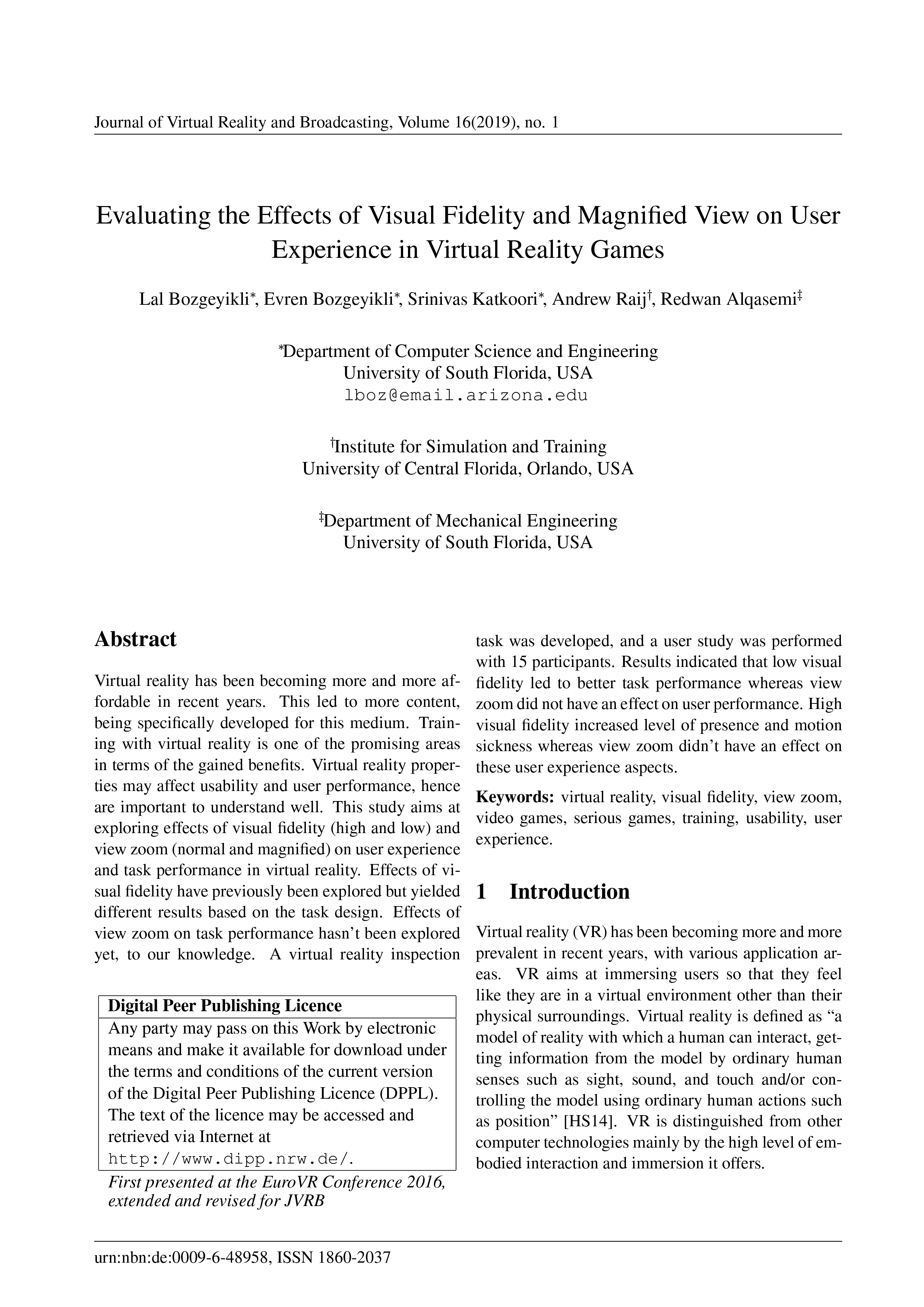Evaluating the Effects of Visual Fidelity and Magnified View on User Experience in Virtual Reality Games
DOI:
https://doi.org/10.20385/1860-2037/16.2019.1Keywords:
Usability, Virtual Environments, Virtual realityAbstract
Virtual reality has been becoming more affordable in recent years. This led to more content specifically developed for this medium. Training with virtual reality is one of the promising areas in terms of the benefits. Virtual reality properties may affect user performance. This study aims at exploring effects of visual fidelity (high and low) and view zoom (normal and magnified) on task performance in virtual reality. Effects of visual fidelity have previously been explored but yielded different results based on the task design. Effects of view zoom on task performance haven’t been explored yet. An inspection task in virtual reality was developed and a user study was performed with 15 participants. Results indicated that low visual fidelity led to better task performance whereas view zoom did not have an effect on the performance.
Downloads
Published
2021-05-04
Issue
Section
EuroVR 2016





